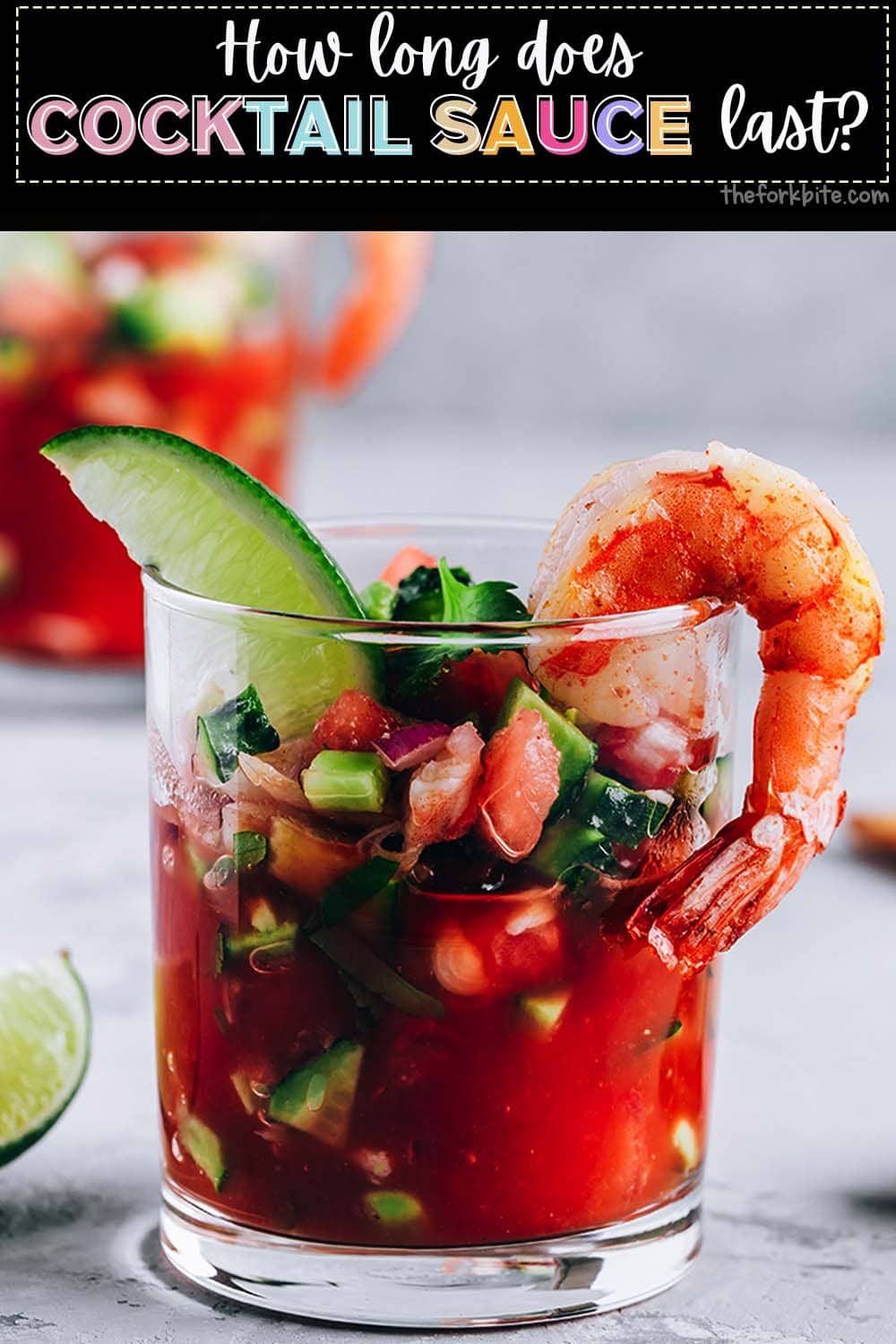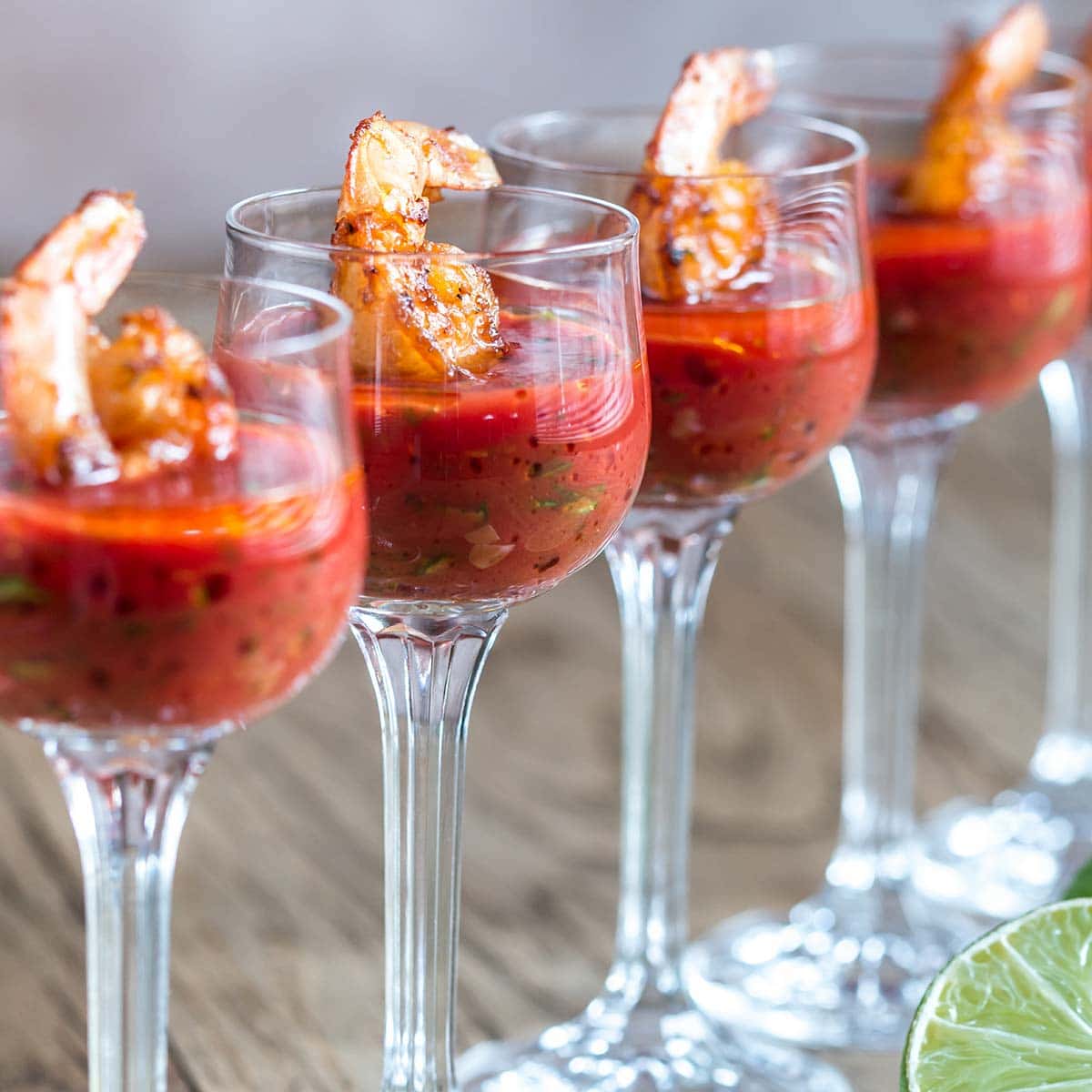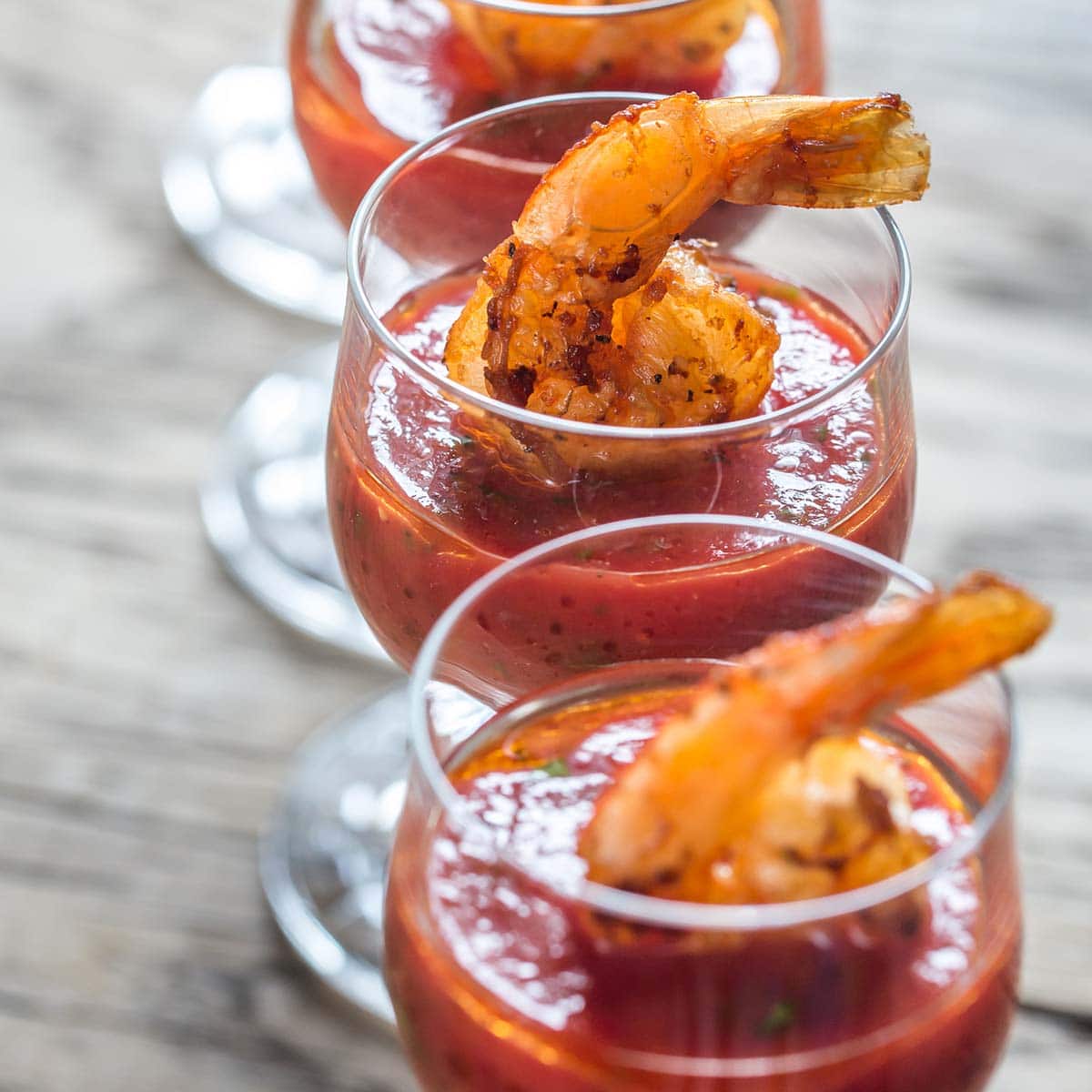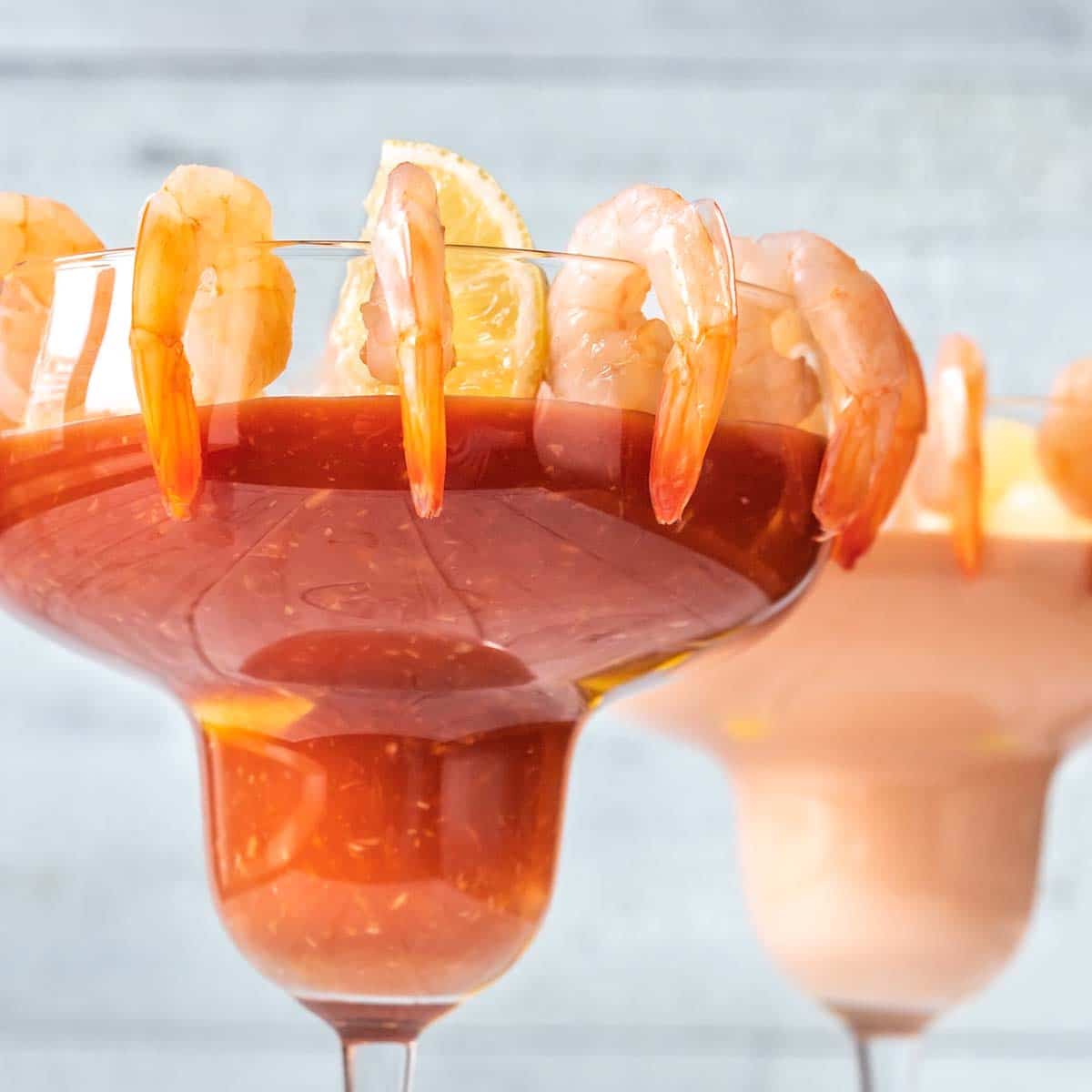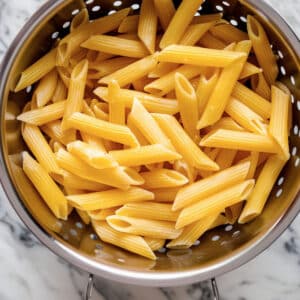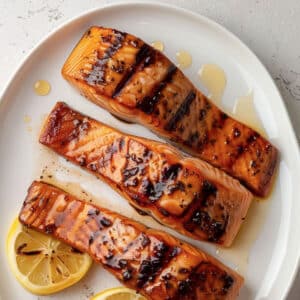Have you ever bought cocktail sauce for a seafood dish you were planning to prepare but for one reason or another, you didn't get around to it, and two weeks later, the sauce is still sat there in your fridge?
Is it still usable or not. How do you know if it's going off? How should it be stored anyway?
Another scenario is when you're cleaning out your fridge or pantry, and you come across a bottle of Heinz cocktail sauce that has been there for goodness knows how long.
It's well past its "use-by date," but you're worried if it's still okay to serve. Is it worth the risk?
Jump to:
If any of these situations or something similar rings true with you and you'd like a peace of mind once and for all, you'll be pleased to know you're in the right place.
I've asked these questions of myself many times, and I've now done the necessary research into the ins and outs of cocktail sauce and for how long you can keep it. I would like to share my findings with you.
How long does cocktail sauce last?
The best place to start is with commercially bottled shop-bought cocktail sauce. When the bottle has not yet been broached, its shelf life is between 12 and 18 months.
You should be able to find a "best by date" printed somewhere on the label or bottle top, which is just as well as I've got a terrible memory for dates.
How about if the unopened bottle is past its "best by date?"
The odds are that, as with lots of other types of condiments, your cocktail sauce will still be okay inside the bottle if it hasn't been opened.
The best thing to do is to open the bottle and see if you can spot any signs of spoilage. I'll go into the detail of those signs a little later on.
After opening, the sauce should be okay to keep in your pantry for up to one month. If you refrigerate it, it should last even longer - anywhere up to 6 months.
Even then, it won't necessarily go bad after that time, but the taste will almost certainly have deteriorated.
Does the same apply to a homemade cocktail sauce?
Not really. But because the ingredients in the homemade cocktail sauce are all quite stable, it should last for quite a while after making, providing you keep it covered and stored in a cool environment.
While commercial, store-bought cocktail sourced will be okay in your fridge for months, you shouldn't keep the homemade variety in your fridge for longer than one week.
But here's the rub.
If you've been dunking shrimps into your container of cocktail sauce, once you've finished with it, don't store it; throw it away. It shouldn't be a big deal.
After all, when you're making your own, you can control the batch size, so you shouldn't end up with loads of leftovers.
It's so quick and easy to make you knock up a small amount when the mood or need takes you.
How do you know if the cocktail sauce is bad?
The first time I found that the consistency of my cocktail sauce had become gel-like, I thought I would have to ditch it.
Having since read up about it, I've discovered that it's not a problem.
I found out that it is a natural reaction caused by horseradish roots and the pectin found in tomatoes. It's not harmful to eat, and a quick stir usually solves the problem.
Gellification occurs more often with sauces that contain low artificial preservatives. So if that happens to your sauce, it's actually not a bad thing.
But if your sauce truly has spoilt, I'm about to advise you how you can tell.
1 Look out for signs of mold.
When the cocktail sauce has been sat around for too long, mold spores will begin to appear on the surface. Don't just scrape off the mold, thinking you can use the rest of the sauce.
The contamination is likely to have spread even though you may not be able to see it. Be safe and throw it away. You don't want to risk food poisoning.
The other thing to look out for is any changes in the color of the sauce.
When it's fresh, the cocktail sauce will have a nice bright red color, but as it ages, the color will darken, particularly when it's left out too long at room temperature.
2 The Smell Test
When the cocktail sauce is fresh, it has a slightly sweet aroma from the ketchup, with a hint of umami from the Worcestershire sauce, plus some spiciness from the garlic, horseradish, and lemon.
If you think your sauce has been hanging around too long, take a quick sniff. You can see if you can pick up a whiff of mold or rot, or staleness. If you can, dispose of it.
3 The taste test
When the cocktail sauce is on its way out, you might detect a sort of rotten taste from the tomatoes, or you might find that the zest from the garlic and lemon has become far too strong.
You could always try to disguise these off notes by adding some strong spices or vibrant herbs.
However, all you're doing is glossing over the cracks. There's no point in making yourself ill simply because you can't be bothered to make or buy some new sauce. Bite the bullet and throw it away.
But if it looks smells and tastes okay, the odds are, it probably is.
If your sauce is ancient, many months past its best by date, get rid of it. Even if it's still okay to eat, you can bet that it will have lost much of its flavor.
The health risk of eating sauce that has gone bad
As I said earlier, an unopened bottle of cocktail sauce will last for many months, even well past its "sell-by date". Even so, it should still be safe to eat, providing there are no obvious signs of spoilage.
When it comes to homemade cocktail sauce, though, you have to exercise much more caution.
It's all too easy to contaminate this type of sauce if the utensils you're using to make it are not spotlessly clean.
Another danger is leaving cocktail sauce around that has already had food dipped into it.
It's an open invitation for harmful bacteria to build up, and if you leave it hanging around at room temperature for too long, it surely will.
Don't take any risks with your health. Get rid of it.
Rely on your senses. If it looks, tastes, or smells anything but perfect, you can throw it away.
Best ways of storing cocktail sauce
If you prepare your cocktail sauce for storing properly, you'll be able to keep it safely for a few days.
Here's what to do:
1 Protection from heat and light
When exposed directly to heat and or light, the chemical makeup of cocktail sauce will begin to break down, and its taste will quickly deteriorate.
Don't leave it on the kitchen work surface. Whether we are talking store-bought or homemade, once it's been opened or exposed to the air, it needs to be refrigerated.
As I said earlier, you can store unopened bottles of cocktail sauce in a cool dark place like a pantry or kitchen cupboard (providing it's not near any heat sources) for many months, and its taste will remain unaltered.
If you want to keep it for the longest time possible, you might want to consider storing it in dark glass jars to minimize any direct light landing on the bottle.
2 Cover it with cling wrap
If the cocktail sauce is exposed to the air or any moisture, it becomes susceptible to developing mold.
If you wish to refrigerate it for a few days, the best thing is to transfer it into an airtight container. It would be best if you then wrapped the container with cling film, which will protect it further from mold growth.
Concerning store-bought cocktail sauce, cling wrap is unnecessary, providing you make sure that the bottle is sealed tightly after use.
This will keep out any air or moisture and protect the flavor of the sauce.
3 Invert the bottle
This is a nice and easy trick. If you store the bottle upside down, you will create a vacuum at the bottom of the bottle (which is now uppermost), which will help prevent air from coming in through the lid.
The less air in the bottle or container, the less you need to worry about your sauce becoming moldy in the immediate future.
4 Freezing cocktail sauce
If you want to keep your cocktail sauce for a long time, and this applies to both homemade or opened store-bought sauce, you should consider freezing it.
Just pop the bottle or sealed container into a freezer bag and place it in your freezer.
Is it best to refrigerate cocktail sauce after opening?
If it's likely that your store-bought cocktail sauce is going to be around for a week or two, then yes, you ought to store it in your fridge.
If we are talking homemade cocktail sauce, refrigerating it is a must.
Recommendation:
At the risk of repeating myself, to maintain the flavor of cocktail sauce for as long as possible, it's best to store it upside down in your fridge.
More on freezing cocktail sauce
The cocktail sauce freezes quite nicely. However, although you can freeze it for many months, it is recommended to consuming it within six months to enjoy the flavor at its best.
It's best not to freeze it in a glass jar because there is a danger that the glass will expand and explode, which would not only create a mess in your freezer but could result in producing shards of glass that could cut the un-wary.
Instead of glass, I recommend using plastic containers or freezer bags made from BPA-free materials.
Here are the steps to follow:
Step 1 Portioning the sauce
Whether it's a homemade or store-bought cocktail sauce, I recommend freezing it in portion sizes.
Let's face it; it's hardly likely that you would want to use a whole bottle of sauce at one sitting anyway, and as you shouldn't refreeze cocktail sauce, it makes good sense to freeze it in portion sizes.
If there are any leftovers, throw them away.
Step 2 Proper storage
It's best to package cocktail sauce for freezing in either an airtight container, a Ziploc bag, or a vacuum-sealed bag.
Any one of these containers will keep your cocktail sauce safe in your freezer and keep the freezer burn at bay.
Packaging store-bought:
Even though the commercially made cocktail sauce is supplied in a plastic bottle, it is advisable wrapping the bottle in cling film or placing it into a Ziploc bag. It adds another layer of protection and will help to prevent freezer burn.
If you got a glass bottle of store-bought cocktail sauce, I recommend wrapping the bottle in cling film or placing it inside a plastic container before freezing.
If store-bought sauce is packed in a glass jar or bottle, transfer it to a plastic container to prevent shuttering. Wrap the bottle in cling film and place it in the freezer.
When transferring the sauce into a container, it's important to leave about an inch of space at the top of the container to allow the source to expand as it freezes.
Packaging homemade cocktail sauce:
Homemade cocktail sauce ought to be transferred into either an airtight plastic container or a freezer bag, then have as much air as possible evacuated from the bag or container before sealing and freezing.
Step 3 Sealing and labeling the container or bag of sauce
When using an airtight container to store anything in your freezer, it's a good idea to check the seal first for signs of any damage. If all is well, put the lid in place and seal it tightly.
If your preferred option is a freezer bag, don't forget to squeeze out as much air as possible before sealing. One way of doing this is to use a straw and suck the air out.
Once you've sealed the container or bag, label it with its contents and date of freezing.
Step 4 The actual freezing
Find a safe place in your freezer to store the cocktail sauce, preferably when you can put nothing else on top of it.
Don't forget to let it freeze completely before you start moving stuff around in your freezer, or you might accidentally put something heavy on top of it.
If you do, and it hasn't frozen solid, you could end up with a frozen sticky, gooey mess all over the inside of your freezer.
The proper way of defrosting it
Just leave it overnight in your fridge. It allows the cocktail sauce to defrost evenly. It also helps to preserve both the taste and texture.
I have known the texture of frozen cocktail sauce to separate a little the longer it's been frozen.
Should that happen, the best way to deal with it is to stir it once it is defrosted, and this will mix any separated water back in with the main body of the sauce, reconstituting it to its original texture.
Another little trick I've learned, if it's not quite as flavorsome as it was, is to add a little extra spice into it.
If you didn't plan and you need to thaw frozen cocktail sauce quickly, you can always put the container or bag into a bowl of cool water for a few minutes - about ten or so should do it.
Once it's defrosted, give it a quick squeeze inside the bag to remix all the ingredients.
Can you refreeze cocktail sauce?
It's not a good idea to refreeze cocktail sauce. If you do, you run the risk of promoting bacterial growth and altering the sauce's texture.
As I mentioned earlier, if you freeze your cocktail sauce in portions - say in the smallest freezer bags, you can defrost just the amount you need, and as you shouldn't refreeze any leftovers, you will minimize any wastage.
I usually put the leftover cocktail sauce in an ice cube tray, flash freeze for an hour, transfer it into a container, and freeze it.
How would you describe cocktail sauce?
Cocktail sauce is a tomato ketchup-based dressing or dips commonly served as an accompaniment to boiled or steamed shrimp. It has a creamy consistency and a tangy, savory, and slightly spicy taste.
It works well with almost any kind of seafood, and you'll very often come across it in oyster and sushi bars.
What is in homemade cocktail sauce?
Although the flavor may on first tasting seem somewhat complex, it is simple to make with a few common ingredients that most people have hanging around in their kitchens.
1 Ketchup
The daddy of all condiments. Good old tomato ketchup. Salty, sweet tomato yumminess. The cocktail sauce wouldn't be cocktail sauce without it.
2 Horseradish
Horseradish hails from the same family as mustard and wasabi, and with relatives like that, you know it's going to go down with a bang.
As soon as you taste it, it hits you with a blast of heat that almost brings years to your eyes - tears of happiness. But it's gone as soon as it's registered.
The fact is that if you do overeat this stuff, it will bring real tears to your eyes as your sinuses go into flip-flop mode.
3 Fresh lemon juice
I love fresh lemon juice. It's so much better than the processed stuff - zingier and with a wonderful, unmistakable smell.
4 Worcestershire sauce
There is nothing else quite like Worcester sauce. It is made with anchovies, molasses, tamarind, and vinegar and brings the delightful taste of umami to the party.
5 Hot sauce
You don't have to add this ingredient, but trust me - your sauce will be so much better if you do. It gives it that little bit of kick.
The Brits' cocktail sauce (they call it Marie Rose) uses a little mayo, or crème Fraiche, or yogurt. It's scrummy. It brings a nice creaminess to the sauce and turns it into a lovely pink color.
The best thing about making your own cocktail sauce is that so quick and easy, and you've probably got all the ingredients you need in your pantry. Less than five minutes, and it's job done.
Customize the flavor
The ingredients listed above produce an absolutely delicious cocktail sauce, but if you want to get a little inventive and make your own variant - go for it. Check out my recipe for the cilantro lime shrimp and this Choo Chee Curry recipe.
There are many things from which you can choose, and once again, they're likely to be things that you've got in the cupboard. As you're experimenting, gently does it.
Start with no more than half a teaspoon of your chosen extra ingredient. Stir it in and taste.
Recipe: Try this Shrimp Stacked Sushi (Recipe here)
Here are things you can try.
- Salt and pepper - black pepper is best, and go easy on the salt
- Brown sugar - to bring an extra caramel-like sweetness
- Chili pepper - for extra spiciness and heat
- Mayo, crème fraiche of yogurt like the Brit’s Marie Rose sauce
- Steak sauce - gives it an extra shot of umami
Safety first before serving
When you're dealing with seafood, and bearing in mind that contaminated shrimp can give you, your family, or your guests' food poisoning - you need to take extra special care to avoid the risk of food poisoning.
Here's how.
Fresh shrimps with cocktail sauce are one of the best finger foods ever. It's also pretty nutritional.
One big shrimp contains about 7 calories, virtually no fat, and a gram of protein. It's so much healthier than, say, a cocktail-sized pig-in-a-blanket which includes a whopping 67 calories, 6 grams of fat, but only 1.5 grams worth of protein.
However, you can't afford to ignore the fact that shrimp can easily become laden with bacteria which can make you ill.
Why?
Because shrimp may harbor bacteria that could make you sick.
You need to be careful but don't over worry.
As long as you take the proper precautions, everything will be fine, especially if you're cooking the shrimp yourself, as this will kill off any existing bacteria.
I'm going to give you six little tips that can assist in making sure you serve up the healthiest shrimp possible.
Tip 1 Buy wild US-caught shrimp
According to a report in Consumer Magazine, when sampled, US caught wild shrimp were less likely to have bacteria. Only 20% contained them instead of between 69 and 83% of farmed shrimp that comes from Bangladesh, India, and Indonesia.
Tip 2 Make sure the shrimp is the last thing you buy
Bacteria proliferate at temperatures over 40°F, so it's important not to let shrimp get too warm before you serve them, or, if you're cooking them yourself, don't leave them around outside at room temperature for too long afterward.
When you're out shopping, make sure they are one of the last items you place in your grocery cart. If you're buying from the seafood counter, you can always ask for or even buy a bag of ice to keep the shrimp chilled on the journey home.
Tip 3 Wash everything well
Don't forget to de-vein the shrimp, and as soon as you've done so, wash your hands. You must also wash any kitchen utensils you use in the preparation process in hot soapy water.
An effective way of killing off bacteria is to put any kitchen implements you used, including the cutting board if you used one, through your dishwasher's hottest cycle.
Please feel free to refer to this guide on the best way of preparing shrimp, including de-veining.
Tip 4 Refrigerate the shrimp
Once you've finished preparing your shrimp platter, you should keep it in your fridge until you're ready to serve.
The recommended temperature for keeping fresh food safely in your refrigerator is from 35°F to 38°F.
Tip 5 Ice the shrimp
Perishable foodstuff should never be left outside of your fridge for longer than two hours, and if the temperature rises above 90°F, make that only one hour.
Otherwise, bacteria that can cause illness will begin to multiply.
To keep things like shrimp nice and cold, serve them on a pre-chilled stainless steel tray or bowl over ice.

